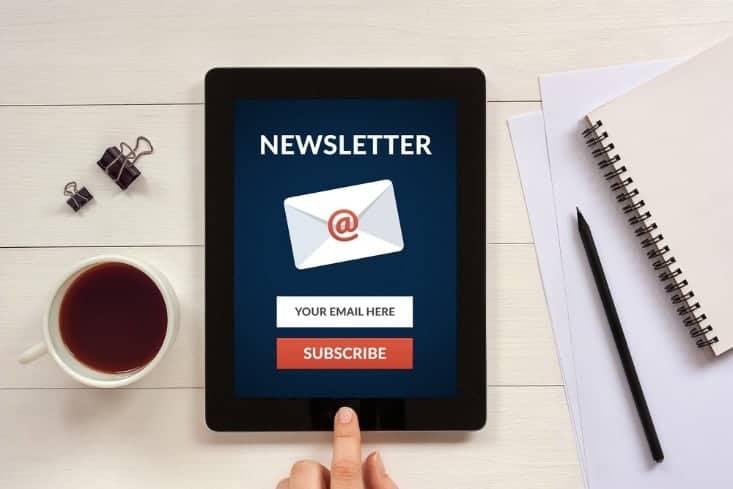If you want to get someone’s attention, call them by name. This is just as true in marketing as it is in any other context. Studies and reports have consistently found that when you personalize your email marketing, those emails tend to perform better than generic ones, and the demand for tailored content isn’t slowing down any time soon. Keep reading to learn more about why and how you should personalize your emails.
The internet has given rise to countless new businesses, and to stand out in a sea of virtual storefronts, a “spray and pray” marketing approach is no longer effective. Modern marketing is all about building relationships with customers.
People like to feel recognized and appreciated by the companies they do business with. This is especially true in an age when people have more choices than ever about what to do with their disposable income.
Email marketing is the ideal medium for building relationships with your customers. There are several reasons why it’s so effective.
First, everyone on your email list is (or should be) there because they want to be – they took the first step towards building a relationship by permitting you to contact them.
Second, email gives you a rare and valuable chance to grab your audience’s full attention, which is hard to do through other types of marketing. Finally, email marketing is customizable and ongoing. As you learn more about a customer over time, you can tailor your emails more closely to their interests and needs.
The numbers don’t lie: email marketing has an impressive ROI to begin with, and personalized emails perform even better. Even something as simple as using the recipient’s name in the subject line can increase your open rate.
Even as long ago as 2014, the average open rate for personalized emails was 17.4%, compared to 11.4% for generic emails. Personalized emails also bring in six times more revenue than generic emails. Clearly, marketers who personalize their messages have a huge advantage over those who don’t.
There are two approaches to take when you personalize your email marketing. The first, called variable substitution, is a fill-in-the-blanks method. With this approach, you insert information about your subscribers — such as their name, place of work, or job title — at appropriate places in your email.
If you’ve gotten a marketing email that addresses you by name, you’ve seen this approach at work. Variable substitution is a simple way to add a more personal touch to your emails. However, it isn’t easy to do any in-depth personalization with this approach.
A more in-depth – but also more difficult – method is to vary your emails’ actual content based on what you know about your subscribers. To do this, you would start by creating a template for the email. Then you would write different versions of each “piece” of the email to appeal to different segments of your email list. This type of email comes across as highly personalized. The drawback is that it can take a while to write different versions of the same message, and it takes a lot of testing to ensure that each version of the email is coherent.

For many marketers, the hardest part of personalizing email content is figuring out where to start. 94% of marketers agree that personalization is an important aspect of marketing, but 42% don’t send any personalized emails. If you feel stuck when it comes to customizing your emails, here are some actionable tips for making progress.
To personalize your email marketing effectively, you’ve got to know who your subscribers are. If you don’t have good data about your subscribers, your first step is to gather some. The more information you can find, the better. Besides your subscribers’ first and last names, consider gathering the following types of data:

There are several ways you can get the information you need without seeming invasive or pushy. Here are some ideas:
As you accumulate subscriber data, check it over occasionally to make sure it’s clean. A couple of common data issues include fake names and lowercase names, which can look unprofessional if you use them in variable substitution fields. You can solve the first issue by deleting any gibberish strings from your data and creating a default template for subscribers without a name on record. Some marketers also like to force capitalization to deal with the issue of lowercase names.
Once you’ve got enough data, you can start segmenting your email list. Segmenting allows you to target different sub-groups within your audience. For instance, if you’re having a sale on women’s shoes, you might want to send a promotional email to only your female subscribers. You can segment your list as many ways as you want; think about which categories will be the most useful for your business.
It can be helpful to build audience personas for the different segments of your list. As you separate your subscribers by age, gender, work, and interests, create fictional personas to represent each category as accurately as possible. Take your personas’ needs, pain points, likes, and dislikes into account as you personalize your email marketing.
Run plenty of tests as you compose emails with personalized content. When whole sentences or paragraphs can be added or swapped out, it’s all too easy for the final email to seem choppy or cobbled-together (or, worse, nonsensical). Bad writing is more noticeable than good personalization, so test different email variations and make sure they have a smooth flow of words and ideas.
Finally, don’t forget to take your subscribers’ locations into account before you send an email. Good timing is essential. If you’ve got subscribers worldwide and send all your emails simultaneously, some of those people are probably receiving your emails in the middle of the night. Avoid this by setting up a sending schedule based on each subscriber’s local time.
In sum, when you personalize your email marketing, you’re bound to see improvements and significant results. Customers prefer purchasing from brands that remember them and offer them personalized recommendations, so if you take the time to tailor your emails to your audience, you’ll see better engagement and more conversions. If you haven’t done much personalization before, start gathering data about your subscribers and take a few small steps towards customizing your emails – even little changes can make a big difference to your results.
